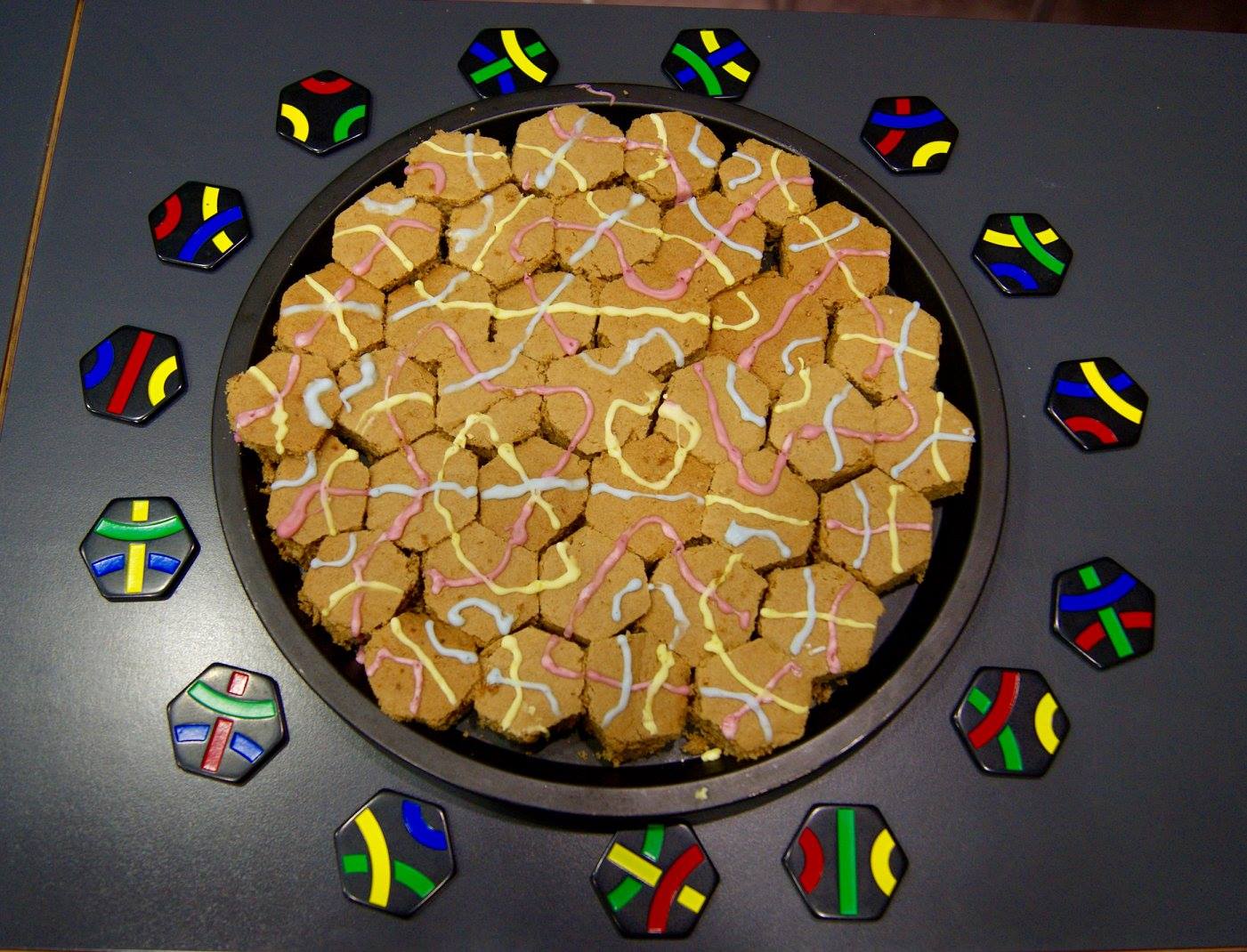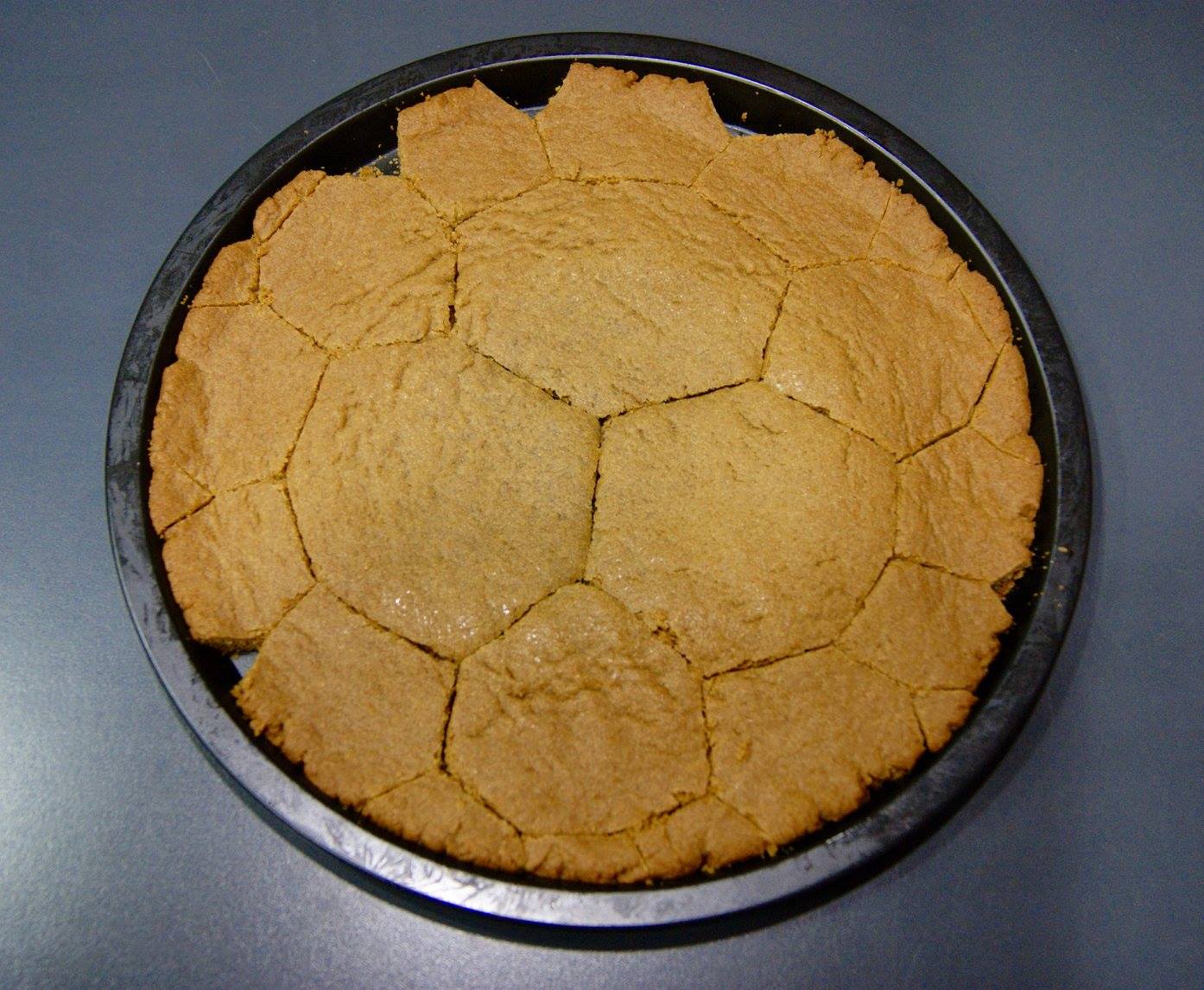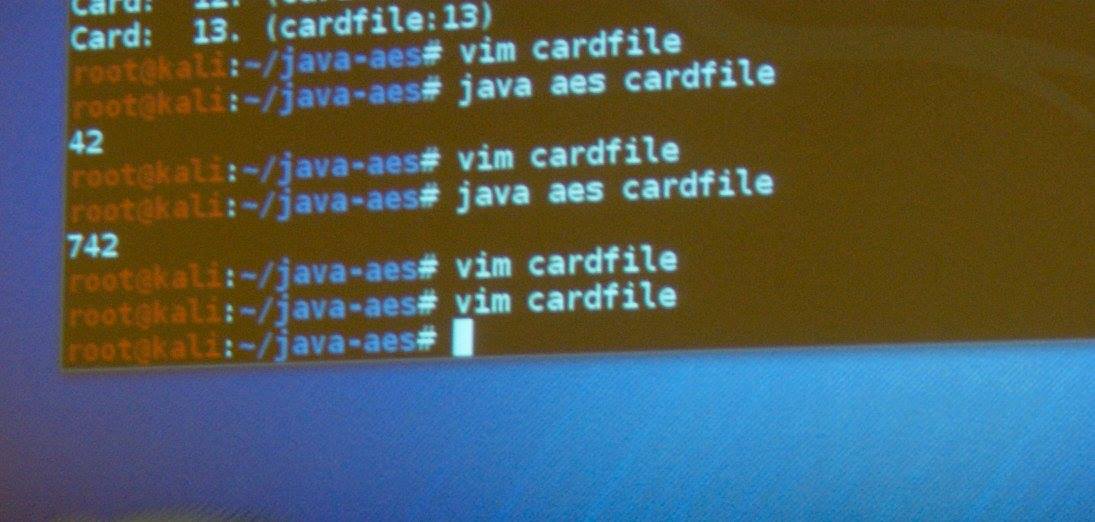In the previous post, I mentioned the hackathon we were organising to celebrate the 200th birthday of Ada Lovelace. The event was a huge success, and it is safe to say that all attendees had a most enjoyable, creative and productive time. For posterity, here is a recount of the various aspects of the hackathon.
The baking competition
Many of the attendees produced delicious treats in advance of the hackathon. These were designed to sustain us throughout the latter half of the event (i.e. after the café upstairs closed at 16:00). Everyone else constituted a committee of ‘impartial judges’ who would decide amongst themselves the winning entry. But before I announce the results, here are the entries:
Edible Tantrix tiles (Simon Rawles, Deepa Shah, Adam P. Goucher):

We only had three colours of icing and an insufficient amount of gingerbread to constitute a standard-issue Tantrix set (cf. the decidedly inedible tiles surrounding the plate). Also, I was responsible for cutting the hexagons and was in something of a rush due to having to catch a bus back to central Cambridge in time for a feast.
Hackathon title (Jade-Amanda Laporte, Jardin-Alice Laporte)

Delicious, pertinent, and with a stylised ‘200’ resembling the digits embossed on the wheels of the Analytical Engine.
Miscellaneous shapes of variable genus (origin unknown)

Definitely the tastiest three-holed torus I’ve encountered.
Hyperbolic tessellation (Tim Hutton, Neela Hutton)

Somewhere between the Poincare and Beltrami-Klein models.
The results
The impartial judges were far too terrified to vote! Due to fear of offending the other entries, they didn’t reach any conclusion! As such, no entry was declared the winner, much to the disappointment of the contestants.
Programming the emulator
We succeeded in implementing an absolute-value function and (later) an activation function for a neural network, verifying its correctness using the Analytical Engine Emulator.

After a while, we managed to get an actual plot of the activation function using the Curve Plotting Apparatus (which Babbage proposed as part of his design for the Analytical Engine). This research eventually culminated in a project to realise a machine learning algorithm on the Analytical Engine (cp4space post coming soon!).

Pingback: Deep Learning with the Analytical Engine | Complex Projective 4-Space